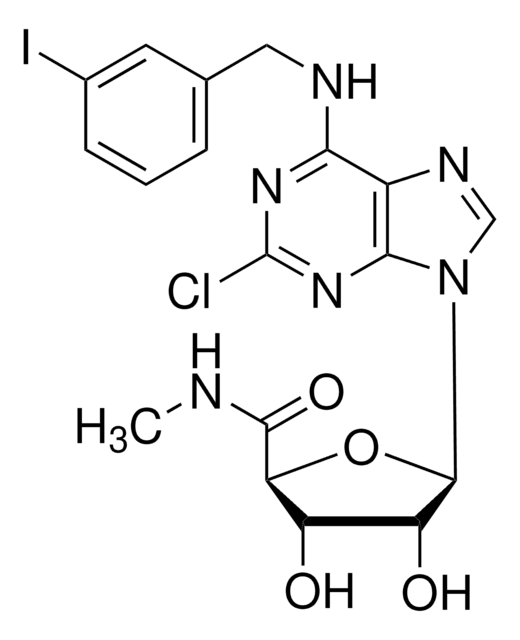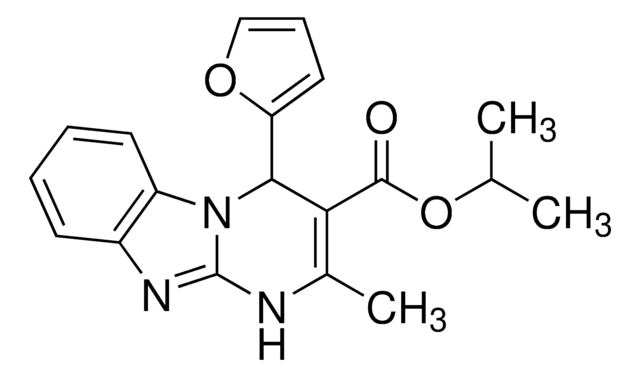M1809
MRS 1523
>98% (HPLC)
Sinónimos:
3-Propyl-6-ethyl-5-[(ethylthio)carbonyl]-2 phenyl-4-propyl-3-pyridine carboxylate
About This Item
Productos recomendados
Quality Level
assay
>98% (HPLC)
form
oil
color
colorless to light brown
solubility
DMSO: >10 mg/mL
H2O: insoluble
shipped in
wet ice
storage temp.
2-8°C
SMILES string
CCCOC(=O)c1c(CCC)c(C(=O)SCC)c(CC)nc1-c2ccccc2
InChI
1S/C23H29NO3S/c1-5-12-17-19(23(26)28-8-4)18(7-3)24-21(16-13-10-9-11-14-16)20(17)22(25)27-15-6-2/h9-11,13-14H,5-8,12,15H2,1-4H3
InChI key
UUSHFEVEROROSP-UHFFFAOYSA-N
Gene Information
human ... ADORA3(140)
rat ... Adora1(29290) , Adora2a(25369) , Adora3(25370)
Application
Biochem/physiol Actions
Features and Benefits
Legal Information
Storage Class
10 - Combustible liquids
wgk_germany
WGK 3
flash_point_f
Not applicable
flash_point_c
Not applicable
ppe
Eyeshields, Gloves
Certificados de análisis (COA)
Busque Certificados de análisis (COA) introduciendo el número de lote del producto. Los números de lote se encuentran en la etiqueta del producto después de las palabras «Lot» o «Batch»
¿Ya tiene este producto?
Encuentre la documentación para los productos que ha comprado recientemente en la Biblioteca de documentos.
Los clientes también vieron
Nuestro equipo de científicos tiene experiencia en todas las áreas de investigación: Ciencias de la vida, Ciencia de los materiales, Síntesis química, Cromatografía, Analítica y muchas otras.
Póngase en contacto con el Servicio técnico













